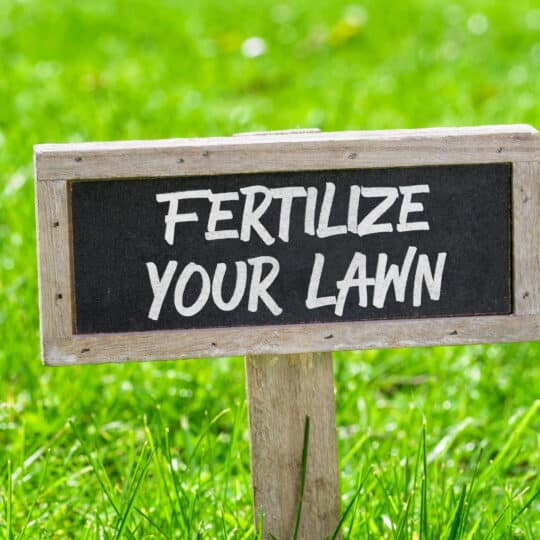When to Fertilize Your Lawn
(hint: not yet)
Posted
January 19, 2023

Fertilizing your lawn is one important task that should be done multiple times a year—except in winter. Done properly, a well-fertilized lawn can spend the winter dormant and still be storing energy to come back lush in the spring. Find out when you should fertilize your lawn and why winter is not the best time.
When to Fertilize Your Lawn
You eat multiple times a day, right? Breakfast is the most important meal. Everyone loves a good brunch. Lunch dates break up the afternoon. Dinner is a time to gather and reflect on the day.
Well, your lawn also needs regularly scheduled feedings to stay strong, lush, and weed-free. The timing and type of fertilizer you use make all the difference.
Ideally, you should fertilize your lawn four times throughout the year: early spring, late spring, summer, and fall. Spread these feedings out about eight weeks apart.
You want to make sure the soil is moist enough to absorb the product you use. The temperature should be moderate enough so the grass isn’t undergoing heat stress. If your lawn is showing signs of other issues, such as weeds or brown spots, the type of fertilizer you use could help fix multiple issues at the same time.
Types of Fertilizer
Not all fertilizers are the same. There are concentrated liquid products that are meant to be mixed and sprayed over your lawn. There are also granulated products meant to be spread with different equipment. The type of product you use matters, this is why it’s important to read the label and directions.
Packaging for the fertilizer tells you a lot, but you have to know what to look for and what it means for your lawn. The numbers tell you what percentage of nitrogen (N), phosphorus (P), and potassium (K) are in the product by weight.
- Nitrogen is what helps make the grass grow and stay green. These fertilizing products usually come in slow and fast-release varieties that either revitalize grass quickly for less time or gradually over longer periods.
- Phosphorus helps grass seeds sprout and works on root growth. This is what you need for new grass.
- Potassium helps keep the grass strong enough to withstand stressors like disease and drought.
One way to ensure your soil is getting the right nutrients is to test its acidity. Home test kits are widely available and help give you a snapshot of your soil’s health and what it may be lacking.
Another way to help improve lawn health is by having it evaluated and treated by a professional. Not only will they have a better understanding of what fertilizer is best, but they can guide you as to the best products and when to apply them.
Contact Cardinal Lawns for more information on the best fertilizers to use for your specific type of grass. Even though now is not the time to apply any fertilizing products, it’s never too early to plan. Spring will bloom before you know it.